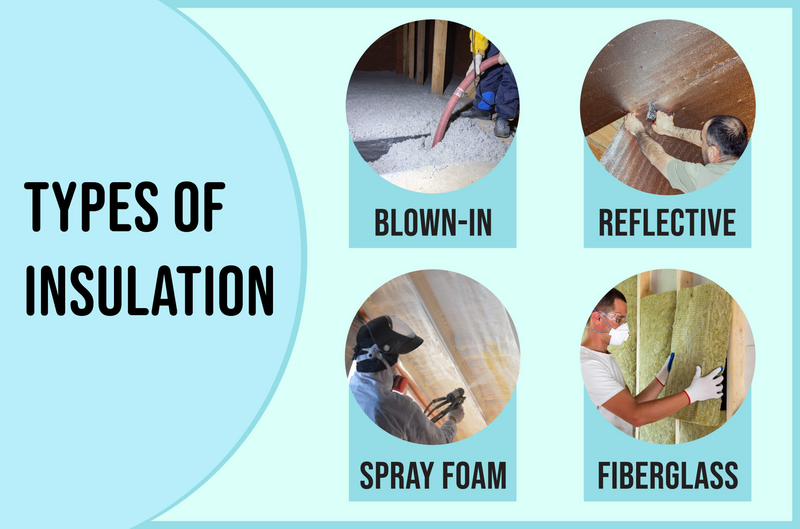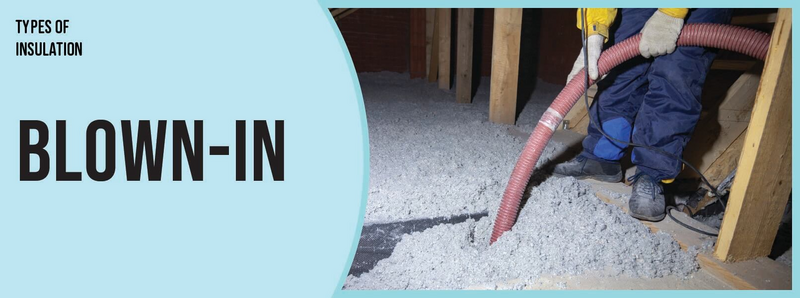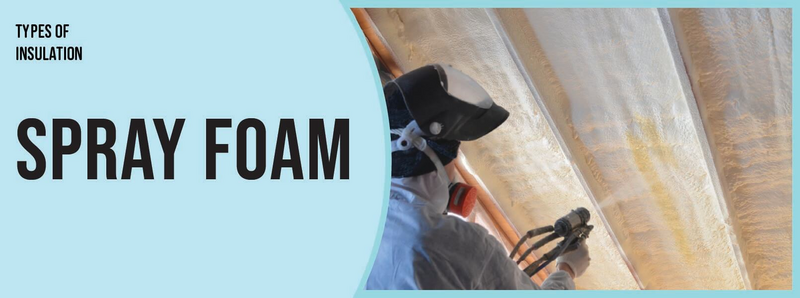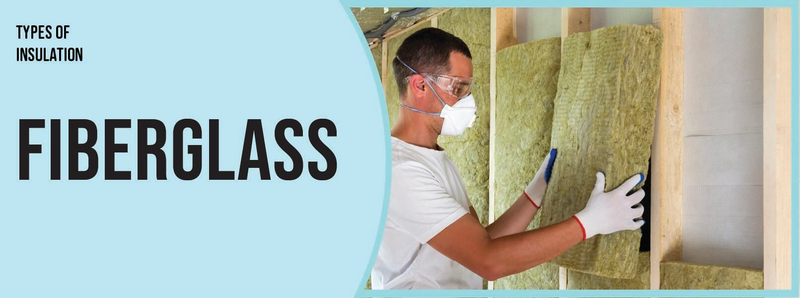- AppliancesElectriciansHVACLandscapingLocksmithPest ControlPlumbingRenovationRoofingT V RepairAll Home Improvement
- Car AccidentClass ActionCorporate LawCriminal DefenseDivorce LawEmployment LawFamily LawFinancial LawLegal AidMedical Injury LawyersMedical MalpracticeReal Estate LawWater Fire RestorationAll Legal
- InvestmentRetirementAll Finance
- Animal InsuranceAutoGeneral InsuranceHealth PolicyHome RentersAll Insurance
- DentalHealth SpecialistsAll Medical
- Animal CareVeterinaryAll Pets
- Auto GlassTowingAll Automotive
Here's How Much Different Types of Insulation Cost

In most homes, insulation is a must. Keep the hot air out when it’s hot, and keep it in when it’s cold — that’s its main job. You might think of insulation as a roll of that pink fiberglass stuff, but in reality, there are many more options to choose from.
Read More Home Improvement Articles
Insulating your home can help lower sky-high energy bills and keep you cozy when the cold weather hits, but the insulation type can significantly impact how much you'll spend.

Blown-in or Loose-Fill Insulation
Blown-in insulation is small clumps of loose fibers that reduce heat loss in walls, floors and attics. Installers use blowers or spray machines to insert the fibers into the wall cavities. Therefore, it's relatively quick to install without significant damage to your drywall.
Installing blown-in insulation is an easy way to make your home more energy efficient and reduce noise, and it's also compatible with preexisting batt insulation. However, it can become moldy and rotten in moist conditions. It may settle in the walls, leaving some areas uninsulated.
Some homeowners install blown-in or loose-fill insulation themselves, although DIY application can be messy work. DIY installation for a whole house typically costs between $500 and $1,200 (CAD 700 and CAD 1,700).
Alternatively, you can hire a professional installer to fit blown-in insulation. How much blown-in insulation costs to install per square foot depends on the material (Data from HomeGuide.)
- Fiberglass: $1 to $2.80 (CAD 1.39 to CAD 3.88)
- Cellulose: $1.20 to $2.80 (CAD 1.66 to CAD 3.88)
- Rockwool: $1.90 to $2.20 (CAD 2.63 to CAD 3.05)
Hiring a professional to install blown-in insulation costs $1,900 (CAD 2,600) on average for the entire project, with a typical range between $800 and $3,000 (CAD 1,110 and CAD 4,150).

Spray Foam
Spray foam insulation is a chemical polyurethane foam that expands to fill cavities in walls, floors and ceilings. It helps reduce air leakage by filling tiny cracks and holes, making it an ideal option for older or drafty homes. Spray foam is also exceptionally long-lasting, offering a lifespan of up to 80 years when installed correctly.
However, this type of insulation is relatively expensive. It can also be messy and difficult to install, especially if you apply it yourself instead of hiring a pro.
According to This Old House, the materials required for DIY spray foam installation cost around $1,825 (CAD 2,500). Professionals typically charge between $1.25 and $1.50 (CAD 1.73 and CAD 2.08) per square foot, although you could spend up to $4.50 (CAD 6.23) per square foot in an existing home.
Installing spray foam insulation in a new build is usually cheaper because you can apply it to open walls during construction. The average cost of installing spray foam in a 2,000-square-foot new build is $5,500 to $13,000 (CAD 7,600 to CAD 18,000), rising to between $6,300 and $15,000 (CAD 8,700 and CAD 20,800) in an existing home of the same size.

Fiberglass Batts or Rolls
Fiberglass batt and roll insulation consist of fiberglass fibers. Batts are pre-sized rectangles of insulation fabric, while you can cut rolls to suit the space. You can use fiberglass batt and roll insulation in preexisting walls and ceilings, although you'll need to remove the drywall. Therefore, these insulation types are more commonly used in new builds.
A key advantage of fiberglass batt or roll insulation is that it's easy to install in attics, even with limited DIY skills. It's also more affordable than many other insulation types. However, it may not work as effectively in awkwardly shaped cavities because it can't adapt to fill all the crevices. Fiberglass insulation is also prone to mold and moisture damage.
According to data from Forbes, fiberglass insulation costs between 88 cents and $1.64 (CAD 1.22 and CAD 2.27) per square foot, including installation labor. However, it could cost more if you need to remove drywall to insulate an existing home. Insulating a 2,000-square-foot home typically costs between $1,200 and $2,400 (CAD 1,700 and CAD 3,300).
More Related Articles:
- How Much Does a Home Inspection Cost?
- 4 Tips for Hiring a General Contractor for Your Next Remodeling Project
- Should You Hire a Contractor or a Handyman?
- 5 Things to Look For When You're Hiring an Electrician
- What to Look for When Hiring an Exterminator

Reflective Insulation
Reflective insulation comes in sheets and consists of insulative material sandwiched between two radiant barrier layers. The radiant barriers are made from a shiny, reflective material that blocks heat from entering and escaping your attic. You can also use it inside cavity walls to reduce heat transfer.
This type of insulation is ideal for DIY installation because it's lightweight and non-toxic. It's also resistant to water damage and ideal for keeping homes cool in hot climates.
However, reflective insulation alone is unlikely to provide adequate insulation in colder areas, so you may need to combine it with another insulation type. It can also create an electrical hazard if it comes into contact with loose or frayed electrical wires. Reflective insulation doesn't work effectively when dirty, so you may need to clean it occasionally after installing it in your attic.
HomeGuide reports that reflective insulation costs between 30 cents and 80 cents (CAD 0.42 and CAD 1.11) per square foot for the materials alone. Expect to spend between 50 cents and $2.20 (CAD 0.70 and CAD 3.05) per square foot on materials and professional installation.
How Much Does Insulation Installation Labor Cost?
According to LawnStarter, professional insulation installation labor costs between 50 cents and $1.60 (CAD 0.70 and CAD 2.22) per square foot, excluding the cost of materials. Installers typically charge less to install insulation in new builds with open walls because they don't need to remove building materials to access the cavity. However, blown-in insulation is relatively cheap and straightforward to install in existing homes.
All CAD conversions are based on the exchange rate on the date of publication.
Elocal Editorial Content is for educational and entertainment purposes only. Editorial Content should not be used as a substitute for advice from a licensed professional in your state reviewing your issue. Systems, equipment, issues and circumstances vary. Follow the manufacturer's safety precautions. The opinions, beliefs and viewpoints expressed by the eLocal Editorial Team and other third-party content providers do not necessarily reflect the opinions, beliefs and viewpoints of eLocal or its affiliate companies. Use of the Blog is subject to the
Website Terms and Conditions.The eLocal Editorial Team operates independently of eLocal USA's marketing and sales decisions.

